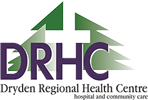- Home
- |
- About
- |
- Patients & Visitors
- |
- Programs & Services
- |
- Careers/Volunteer
- |
- Dryden Regional Health Services Foundation
- |
- News
- |
- Contact
Orthopedics
DRHC boasts an active orthopedic surgical program, including hip, knee, shoulder replacements through collaboration with our partners with the Regional Surgical Services Program.
Our knowledgeable, highly skilled staff will support you throughout your care journey - from initial consultation with the surgeon through to when you are discharged and arrive home from the hospital, our interdisciplinary team will ensure you have the information you need to prepare for your surgery.
Your surgeon and care team will provide you specific information about what to expect before, after, and the day of your surgery. The resources below are intended to provide you with additional information and resources about how to prepare for your surgery.
We also have a library of educational videos available for all surgery patients and their families that will help you to prepare for your upcoming surgery.
If you have any questions about your upcoming procedure, please contact your care team.
Seamless MD is an interactive, step-by-step guide to help you to prepare for your procedure and recover faster afterwards. Patients and their caregivers can both access the platform from any smartphone, tablet and/or computer.
Seamless MD is currently available for all orthopedic and urology patients. Speak with your care team about how to enroll with Seamless MD.
Download from the App Store Download from Google Play Access from a Web Browser
Rapid Access Clinic (formerly the Regional Joint Assessment Centre) is part of the Regional Orthopedic Program, providing services to all patients in Northwestern Ontario through a centralized intake intake system.
There are a variety of resources, informational materials and educational videos about your upcoming surgery on the RAC website.
Total Hip Arthroplasty (THA)
A Total Hip Arthroplasty (THA), sometimes known as a Total Hip Replacement, is an operation that replaces a hip joint that has been damaged. The joint is replaced with an artificial hip joint called a prosthesis.
Your hip is a ball-and-socket joint where the thighbone or femur (ball) meets the pelvis (socket). This joint is surrounded by cartilage, muscles, and ligaments that allow it to move smoothly. The cartilage is a smooth, shock-absorbing layer that covers the bones and allows the ball to glide easily inside the socket.
In a problem hip, the cartilage becomes worn and no longer serves as a cushion and the underlying bone. This causes roughening of the bones and they rub together like sandpaper. The ball grinds in the socket when you move your leg, causing pain and stiffness. The affected leg may become shortened, muscles may become weaker and a limp may develop. Like your own hip, the prosthesis is made of a ball and socket that fit together to form a smooth joint, so you can walk easily and with less pain.
A THR replaces the worn head of the thighbone with an artificial ball on a stem, and an artificial cup replaces the worn socket. The stem is inserted into the thigh bone for stability
Total Knee Arthroplasty (TKA)
A Total Knee Arthroplasty (TKA), sometimes known as a Total Knee Replacement, is an operation that replaces a knee joint that has been damaged.
The most common reason for a knee replacement is to ease pain often caused by arthritis; patients requiring a TKA often have trouble walking, climbing stairs, or getting out of chairs. Your surgeon will look at your knee's range of motion, stability and strength, with X-Rays to show the extent of damage to determine if a patient requires a knee replacement.
A Total Knee Replacement (TKR) is an operation that replaces a knee joint that has been damaged. The joint is replaced with an artificial knee joint called a prosthesis.
The knee is a hinge joint formed by three bones: the femur (thigh bone), the tibia (shin bone) and the patella (knee cap). Strong ligaments and muscles support the knee. Both ends of these bones are covered in cartilage. The cartilage is a smooth, shock-absorbing layer that allows the joint to glide easily. The kneecap (patella), which is attached by thigh muscles, is in front.
Shoulder Surgery - Rotator Cuff Repair
The bones of the shoulder joint include the shoulder blade (scapula), the upper arm bone (humerus) and the collar bone (clavicle). The socket is very shallow. A circular ring of cartilage (labrum) is attached to the edge of the socket. The rotator cuff muscles are a group of deep-seated muscles that keep the head of humerus centered in the socket. They also help lift your arm overhead.
A rotator cuff repair is a type of surgery to repair a tear in one or more of the four rotator cuff tendons. The type of rotator cuff repair you have will be dependent on your surgeon and rotator cuff pathology.
BP.O. Box 3003, 58 Goodall Street, Dryden, Ontario, Canada, P8N 2Z6 Apatientrelations@drhc.on.ca x807-223-8200 TTY807-223-8295 * ^
Contact Us
P.O. Box 3003, 58 Goodall Street
Dryden, Ontario, Canada, P8N 2Z6
x807-223-8200 TTY807-223-8295
Apatientrelations@drhc.on.ca

